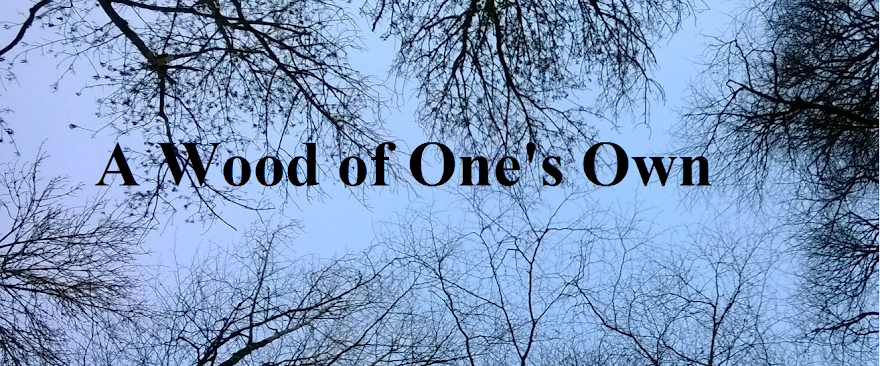or Virginia’s Conceit
Virginia Woolf’s
"The Patron and the Crocus" revolves around a central conceit. Woolf
has one strong idea, that of the first crocus seen growing in Kensington
Gardens and the proliferation of the experience of seeing that crocus. The
essay in The Common Reader (a volume full of wonderful, neat and
insightful essays by Woolf) uses the metaphorical conceit of the crocus to
expand ideas concerning readership and guardianship of writing. She creates the
character of an ideal patron to whom one writes of the crocus and its first
emergence. By patron, she means someone to whom your writing is directed, as
well as someone partially influencing the process.
Woolf
talks about the different types of patron sharing the crocus. I ought to
explain that for Woolf the crocus is imperfect until shared. At this point, the
crocus becomes art. That artifice can be applied simply by turning the
experience into collective personal myth.
The
first potential patron she introduces is the newspaper man. He’ll offer you money
and fame – maybe he’s wearing spats or maybe he’s reclining in a big leather
chair at a big mahogany desk smoking an even bigger cigar. He’s flash and
generous but Woolf’s not convinced. She asks whether there is enough crocus to
grace “every breakfast table from John o’Groats to the Land’s End” and we feel
sure that he’s not our man when faced with her prediction of the frivolously
obscure fate of “journalism”.
Woolf
states “to know who to write for is to know how to write”. Right, we’d better
find this chap then, Ginny! Ah, he’s illusive, changing “from age to age”.
Typical. One might recognise him only by the twinkle in his eye, the crocus in
his buttonhole or his saffron-stained fingers.
Woolf is
introducing us to the reader as patron of the arts. Of course, we’re familiar with the death of the author,
birth of the reader concept. It’s first year undergraduate material but at the
time of writing it was still breaking ground. Thus Woolf’s common reader is
born. A person, such as Woolf perhaps, who is interested in good, long-lasting
writing that will improve, inspire and please her. The crocus must be
transposed rather than bunched into a posy. The latter is sure to wither
whereas the former might thrive if the soil is warm and the roots are strong.
I like a
good extended metaphor and Woolf is excellent at them. It feels pleasingly
versatile, stretched like vellum holding the five pages of content together.
For me, the answer to what is good writing can be fluidly argued through the
idea of the crocus and it ties in with another of Woolf’s essays in the same
volume, “The Modern Essay”, in which she argues that one of
the best qualities of fiction and essay writing is that we should be able to
return to the text and relive it the uncountable number of times our
perspective and situation changes, just as a bulb renews itself so do we as
readers.
As an
aside, I think this essay is a really good example
of the high standards of writing that Woolf requests in “The Modern Essay”; a slick, intimate voicing of
opinion on a timeless question.
.JPG) |
| First emerging buds. A tree peony uncovered in the border. |
 There I am, holed up in a frozen land, listening for the ice to creek and the wind to howl in that intimate and foreboding way, with only these cards for company. I spread them out before me and enjoy the feel of the Greenlandic words on the tip of my tongue and the feel of my English-driven brain turning them over and over trying to fit them with the translations. I smooth my finger over images of icebergs - vistas floating by; and I’ll find a home for the night in their glow.
There I am, holed up in a frozen land, listening for the ice to creek and the wind to howl in that intimate and foreboding way, with only these cards for company. I spread them out before me and enjoy the feel of the Greenlandic words on the tip of my tongue and the feel of my English-driven brain turning them over and over trying to fit them with the translations. I smooth my finger over images of icebergs - vistas floating by; and I’ll find a home for the night in their glow. In the morning I’ll
wake and clutch them to me in their aqua blue envelope and look out across
miles and miles of ice and feel they are my only true guide on this mapless
journey. I, as journeyman, can look to these cards when I feel hopeless, snow
blind, unskilled at my work and wandering lost in the imagined landscape and
know that people with beautiful words had been here long before me, understood
it more than me.
In the morning I’ll
wake and clutch them to me in their aqua blue envelope and look out across
miles and miles of ice and feel they are my only true guide on this mapless
journey. I, as journeyman, can look to these cards when I feel hopeless, snow
blind, unskilled at my work and wandering lost in the imagined landscape and
know that people with beautiful words had been here long before me, understood
it more than me. 

.JPG)